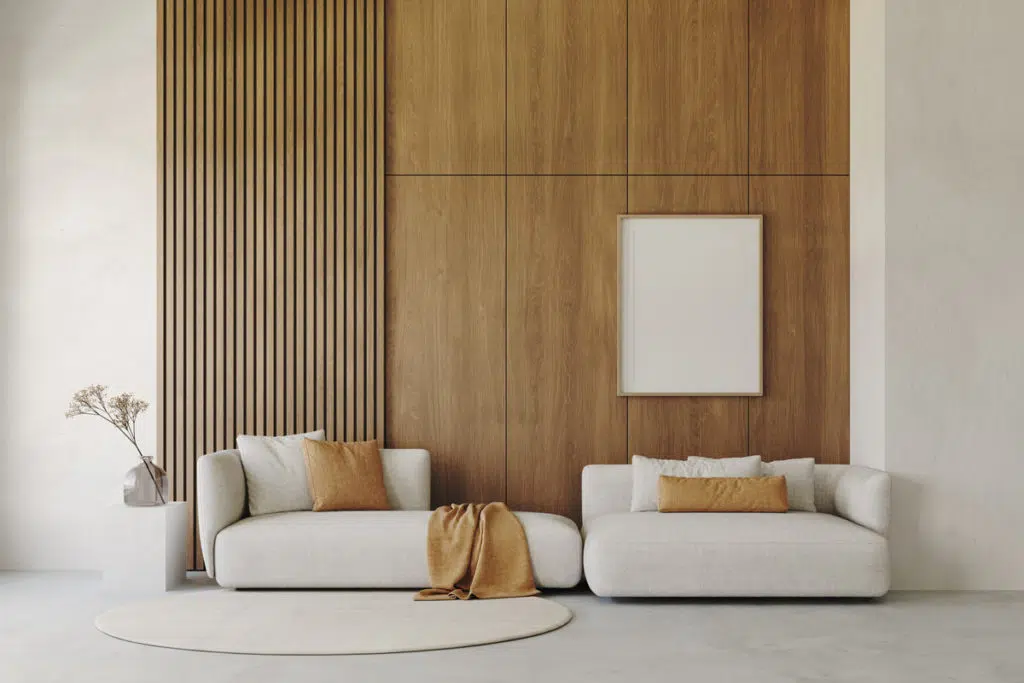
15% OFF YOUR ORDER TODAY! JOIN OUR NEWSLETTER

Delivered By Our Fleet
View delivery information
5 Star Rated
On Google & TrustPilot

Handmade in the UK
From the finest materials

Wall panelling can transform small rooms, making them feel bigger and more stylish. Though often used in large spaces, modern wall panelling works wonders in small areas. Here are some tips for using wall panelling to enhance and visually expand your small spaces.
Vertical panelling makes a room look taller. It draws the eye upward, helping to create the illusion of height. Try using vertical shiplap or beadboard panelling. This not only makes the space seem taller but also adds a touch of charm or elegance.
Light colours make a room feel open and airy. When selecting wall panelling for a small room, go for whites, pastels, or soft neutrals. Whitewashed wood panels or light grey beadboard can make a room serene and spacious.

Horizontal panelling can make a room seem wider, which works well in narrow rooms or hallways. Horizontal shiplap or tongue-and-groove panelling can also make the walls look longer. Keep the panelling light-coloured and use simple furniture to avoid clutter.
Mirrors can make a room look bigger; the effect is even better when used with wall panelling. Install mirrored panels within your wall panelling design. This adds depth and reflects light, enhancing the sense of space. Mirrored wainscoting or panels mixed with wood can be a chic addition to a small room.

High-gloss finishes on wall panelling can make a room feel brighter and larger. Glossy panelling reflects light, creating a more open feel. This works well in small bathrooms or kitchens. However, balance is key—too much gloss can be overwhelming. Consider using gloss on a single accent wall or below a chair rail.
Textured wall panels add depth, making a small room feel more dynamic. 3D wall panels or panelling with designs can add interest and dimension. These panels come in various materials, from wood to PVC, and can be painted to match your room’s colour scheme. Use textured panels on one feature wall to avoid overwhelming the room.
In small spaces, every inch counts. Wall panelling can include built-in storage to make the most of limited space. Consider wainscoting with built-in shelves or panelling with hidden cabinets. This saves space and keeps the room tidy. Built-in bookshelves or hidden compartments within panelling add function while maintaining style.
Mix different panelling styles to add character to your small space. Combining vertical and horizontal panels can create an interesting look distracting from the room’s size. For example, vertical shiplap can be used on one wall and horizontal beadboard on another. This approach makes the space more dynamic and visually interesting.
In small spaces, a little goes a long way. An accent wall with striking panelling can make a big impact. Choose one wall to highlight with unique panelling, like behind the bed in a small bedroom or behind the sofa in a compact living room. Drawing the eye beyond the furniture adds depth and makes the room feel more spacious.
Extending wall panelling to the ceiling can make a room feel bigger. This works well in small attics or loft spaces with lower ceilings. Panelling the ceiling in the same style and colour as the walls creates an expansive, seamless look.
Wall panelling offers stylish solutions for enhancing small spaces. Whether you want to add height, width, or depth, the right panelling can transform a cramped room into a spacious and inviting one. Light colours, vertical lines, textured designs, and integrated storage can make a big impact on your small space without major renovations. Thoughtful design and strategic use of materials are key to creating a space that feels both open and cosy.


BEST SELLERS
Bespoke Shaker Style Full/Half Wall Panelling KitNEW KITS
Custom Slat Wall CreatorDelivery Information


Please enter details for a quote

We offer a FREE shaker style wall panelling design service but only for single wall designs. Please enter the details below and we will respond with your design ASAP!

Fill in the form below and one of the team will deal with your request!
